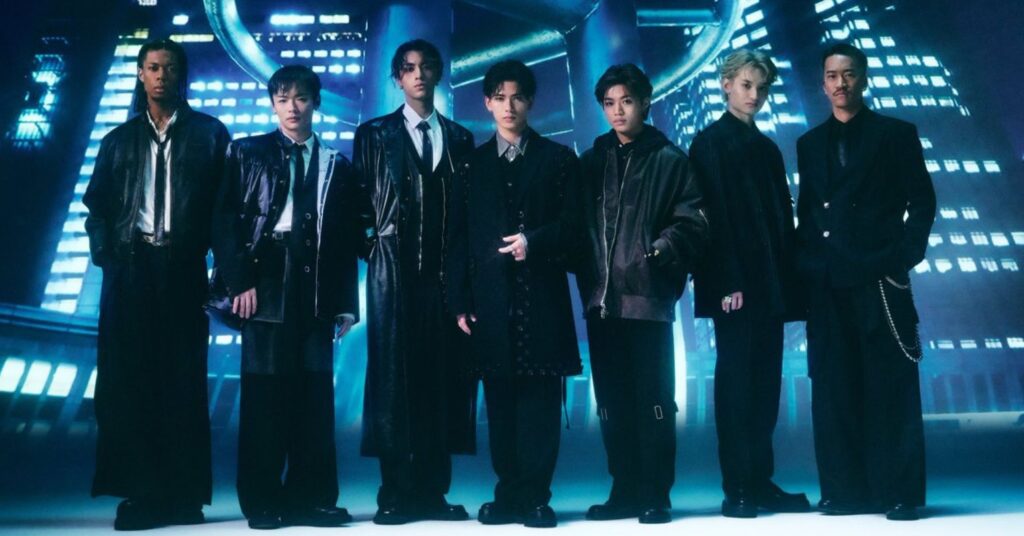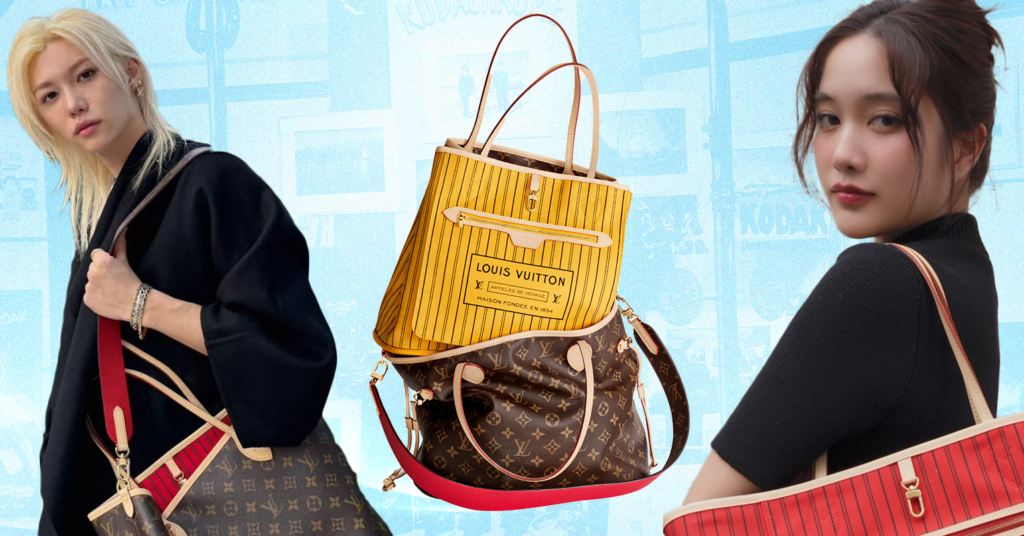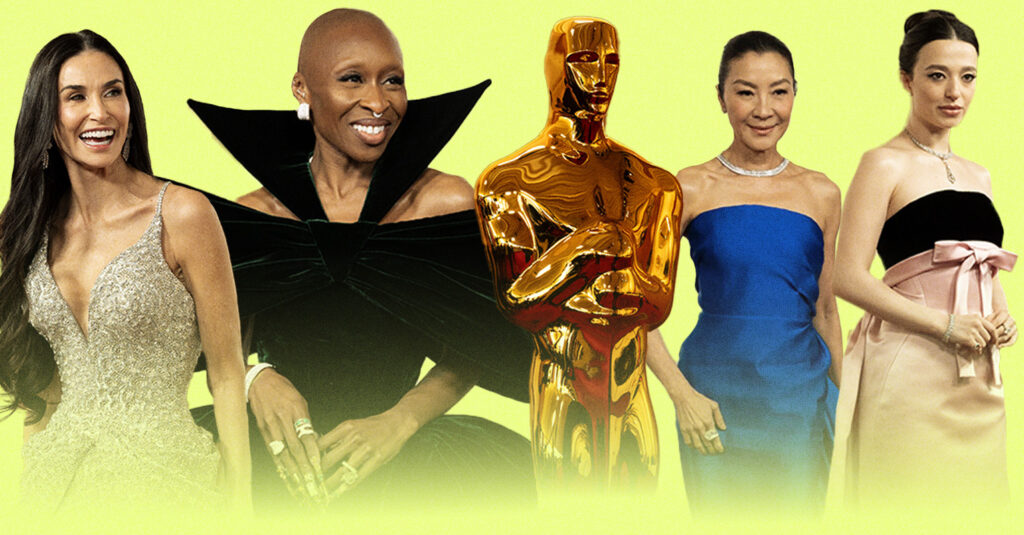Inside the Red Pavilion, NYC’s Asian Neo-Noir Nightclub Where Fantasy Becomes Reality
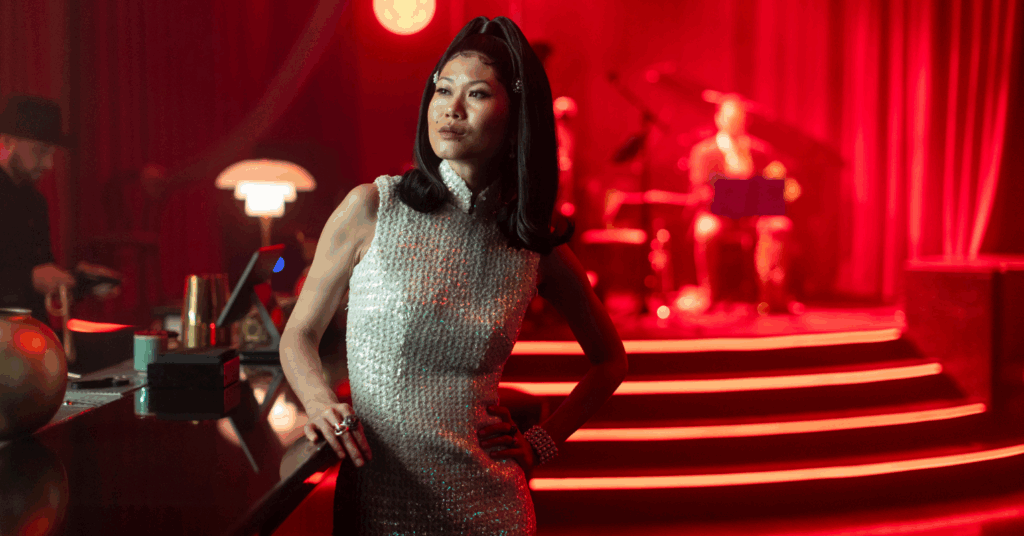
Shien Lee has never been one to shy away from possibility. With a raw Brooklyn warehouse before them, they envisioned a safe space for Asian culture and artistry to flourish without bounds. It was a combination of things: their love for nightlife, a team of creative visionaries, and the surge of anti-Asian hate crimes during the COVID-19 pandemic that brought this possibility to life. Two years ago, they opened its doors, unleashing the Red Pavilion into New York City’s nightlife scene.
To call it a cultural hub is an understatement. Enriched with the aesthetics of Old Shanghai and bathed in a jewel-toned glow, the Red Pavilion is a portal to a dream suspended in time. Some nights, guests may indulge in immersive cabaret shows where others might see aerial dancers captivate the room with gravity-defying grace. However, among the Red Pavilion’s most popular offerings are their musical performances. From Shanghai jazz to Studio Ghibli scores, this is where music and film lovers convene for a night of elegance and wonder.
For a peek behind the magic of it all, EnVi chatted with Shien about their fateful journey to NYC’s nightlife scene and creating the Red Pavilion.
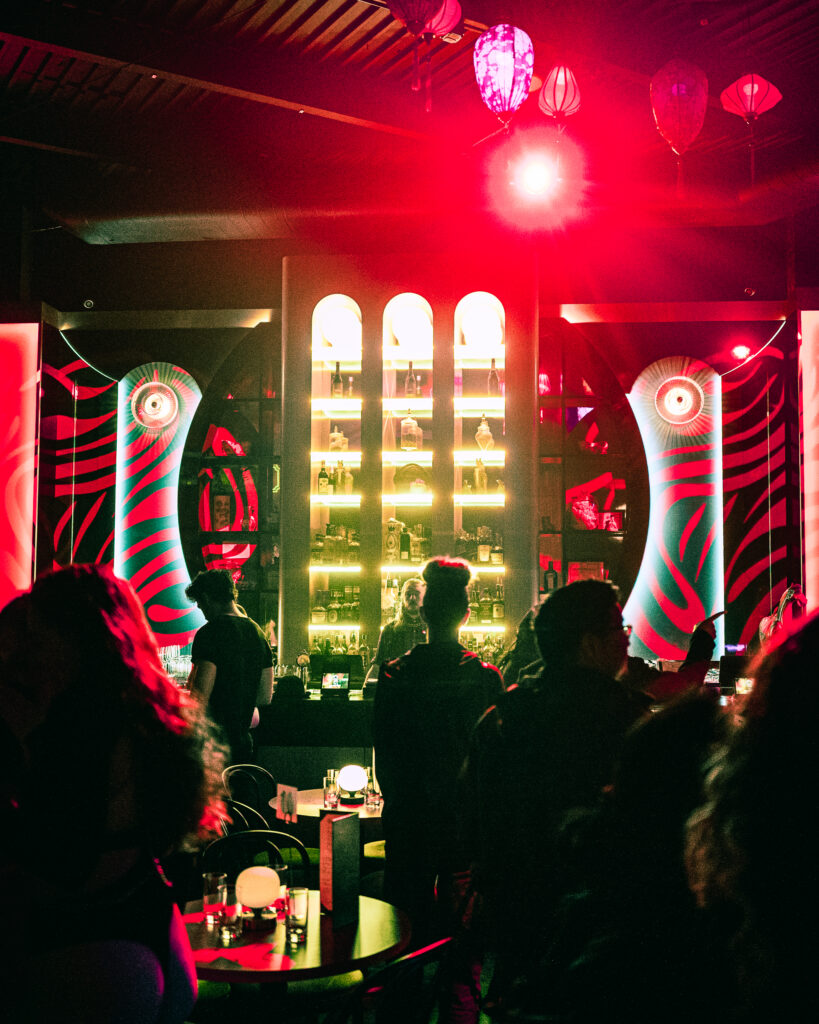
Becoming the “Priestess of the Night”
Originally born in Taipei, Shien grew up with an international background due to her father’s work as a diplomat. While she eventually found herself in New York City’s 2000s nightlife scene as a young adult, her sense of rebellion began as early as middle school.
“The school system [in Taiwan] was really oppressive, and I felt like there weren’t enough spaces for self-expression,” she explained. “My teachers would say, ‘Shien’s so focused on her appearance, she’s not doing well in school and she’s never going to be successful in life.’”
In 2007, Shien moved to New York City for graduate school. There, she encountered more opportunities than ever to meet new people and experiment with fashion. It not only became a means of exercising her creative freedom, but also finding community in her new home.
“The act of dressing up and being witnessed shapes your identity. You can try different subjectivities and also admire other people for their mode of expression,” she said.
By day, Shien was a student at Columbia University. By night, however, she was a figure of extravagance and creativity — “a theater of the self” as she called it. She spent her free time exploring the different flavors of nightlife that the city had to offer. Eventually, she became fully immersed, and her relationship to nightclubs transformed into something symbiotic. Just as she consumed all she could of the scene’s magic, the scene devoured her in return. In the dreamy haze of the city lights and vibrant nightlife, Shien’s “identity was forged.”
“The nightclub is a liminal space where you can explore who you are without judgement and expectation,” she explained.
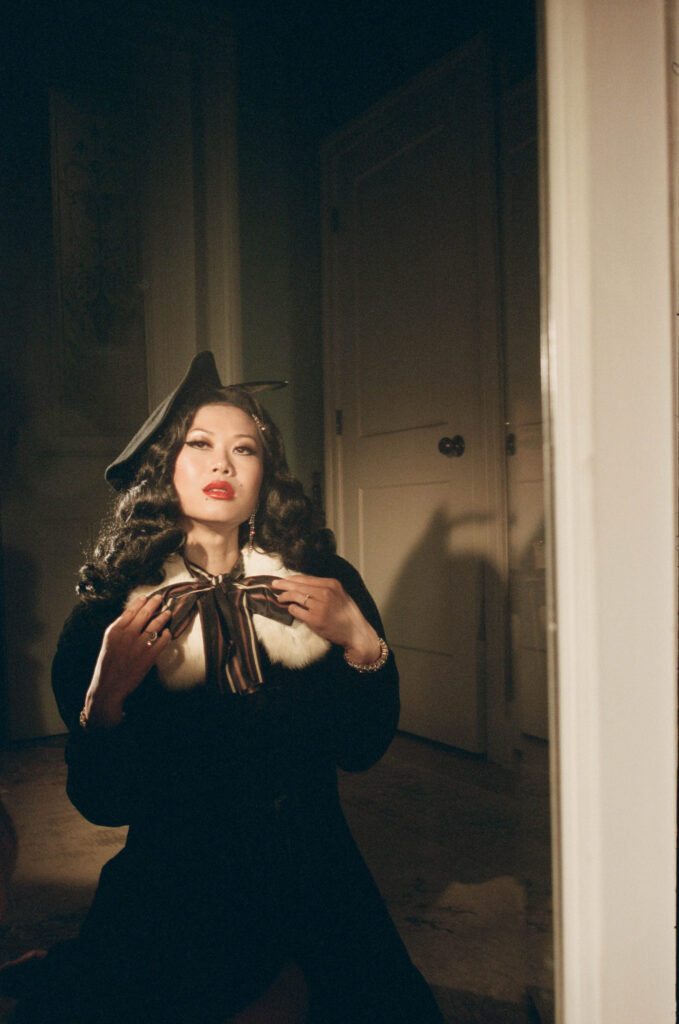
Before founding the Red Pavilion, Shien hosted Dances of Vice, her own series of underground parties that earned her the moniker “Priestess of the Night.” The parties’ name came from a 1923 book by Anita Berber and Sebastian Droste, a notorious dancer couple from Weimar Berlin, titled Dances of Vice, Horror, and Ecstasy. As a collection of poems, prose, and images capturing the decadent and transgressive world of Weimar-era dancers, the work documented Berber and Droste’s creativity amid societal restraints.
“[Dances of Vice] was my idea of madness championing creativity as a means to elevate the mundane,” Shien said.
Each party came with a strict dress code, demanding that attendees were active participants of the experience. They often incorporated elements of the erotic through the burlesque dancers, drag performers, and musicians Shien selected. To her, the erotic is “a powerful place to explore sexual identity and image; a safe space to lose control to play without judgement.” While she considers the Red Pavilion to be a “bite-sized” Dances of Vice, it still carries its own “erotic, dark Venus energy.”
“It’s such an alluring place to see beyond the ordinary,” she added.
Part of the Red Pavilion’s inception was the upsurge of anti-Asian hate crimes during the COVID-19 pandemic. With the intention of creating a safe space for Asian New Yorkers to celebrate culture and beauty, Shien worked tirelessly to transform a barren warehouse into “a world of its own.”
Asian women in particular, Shien noted, were disproportionately targeted in these attacks. Between March 2020 and March 2021, 68% of incidents tracked by Stop Asian Hate were reported by women.
“There’s this idea that we’re meek, that we’re some easy prey,” Shien added. In response to the hypersexualization and perceived docility of Asian women, the Red Pavilion’s evocation of the erotic is also an act of reclamation.
“Here at the Red Pavilion, I want that sexuality to be celebrated and seen as an inner power,” she reflected. “This is like telling stories through our bodies. I think that is subversive and beautiful. It defies these boxes that they’ll put us in as their version of the eroticized or exploitative gaze. Our stories take center stage — the narrative isn’t controlled by someone else.”

A World of Transience and Longing
Since 2023, the Red Pavilion has stood in the heart of the Bushwick neighborhood in Brooklyn. Surrounded by a plethora of community art studios, clubs, and performance spaces, this converted warehouse is Shien’s own “ukiyo,” or “floating world.”
Ukiyo (浮世) culture developed in Edo Period Japan, a time of economic and cultural growth that fostered a middle class with leisure time and disposable income. The concept is famously associated with licensed red-light districts like Yoshiwara where people indulged in “fleeting pleasures” such as entertainment, theater, and other amusements. In a similar vein, the Red Pavilion’s aesthetic was thoughtfully curated to arouse the ephemerality of ukiyo culture. The space was developed under the creative direction of interior designer Jordon Zadfar, along with award-winning lighting designer Brian Tovar. Each component, from the seductive color palette to the blend of Art Deco and Chinese details, comes together in crafting “a magical world where all possibilities can be offered.”
“When you come in, you can tell that there’s soul in every item. Everything was intentionally placed to evoke a sense of elevating outside normal reality. It’s where you can access the deeper wells of your own creativity. You yourself are a precious object in this space,” Shien shared.
Even the floor-to-ceiling windows, one of their favorite parts of the space, are a key feature at play. They reflected, “Are you looking out into the world or is the world looking in? It feels like we’re the art.”
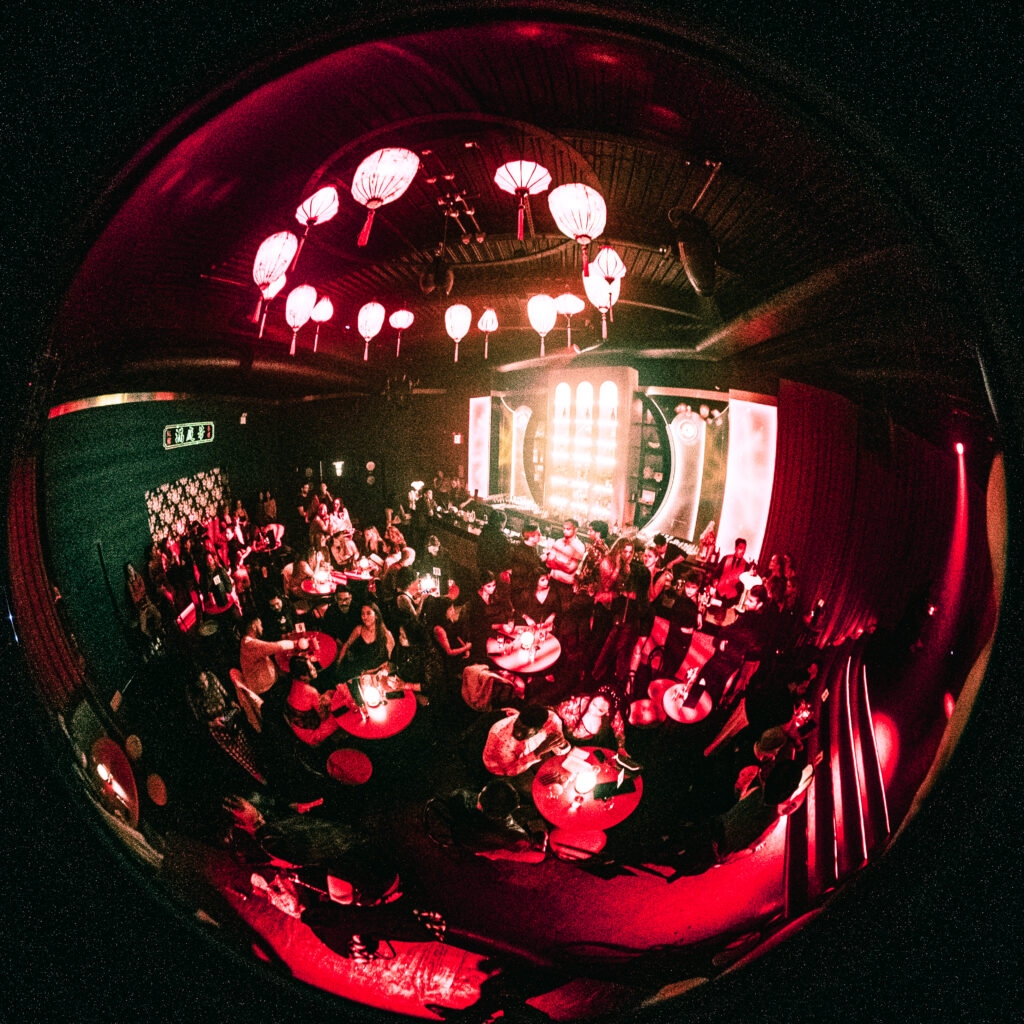
Shien was also deeply influenced by cinema, namely the styles of renowned filmmakers David Lynch and Wong Kar-wai. Lynch, an American counterculture icon known for surreal works like Blue Velvet (1986), incorporated a sense of “mystery, danger, and uncertainty” that inspired Shien.
“In resting in those feelings, every possibility is presented to you,” they said. “Cinema is a vehicle where our consciousness can visit different places. It’s this secret world, a liminal space full of emotion where you can really plunge into the depths of longing.”
While not intentional on Shien’s part, the name “Red Pavilion” also echoes a centuries-old tale about transcendental longing. The Peony Pavilion (1598), a romantic tragicomedy by Chinese playwright Tang Xianzu, is one of literature’s most unforgettable love stories entangling fantasy and reality. As the story goes, a beautiful girl by the name of Du Liniang falls in love with a handsome scholar who appears in her dream. Overcome by lovesickness, she dies and becomes a ghost, embarking on a search for the man in question (a young scholar named Liu Mengmei). By the end of the play, true love conquers even death — Mengmei’s deep love for Liniang brings her back to life and they live happily ever after.
In the Red Pavilion’s mosaic of hidden symbolism, Chinese mythology and superstition are also apparent. The bar, helmed by General Manager and Beverage Director Orson Salicetti, features drinks with culturally significant flavors and names. One popular house cocktail, the Madam Snake, references the Legend of the White Snake: a well-known love story about a white snake spirit who transforms into a woman and falls in love with a human man. Other items on the menu feature Traditional Chinese Medicine ingredients such as ginger, oolong, and Buddha’s hand.
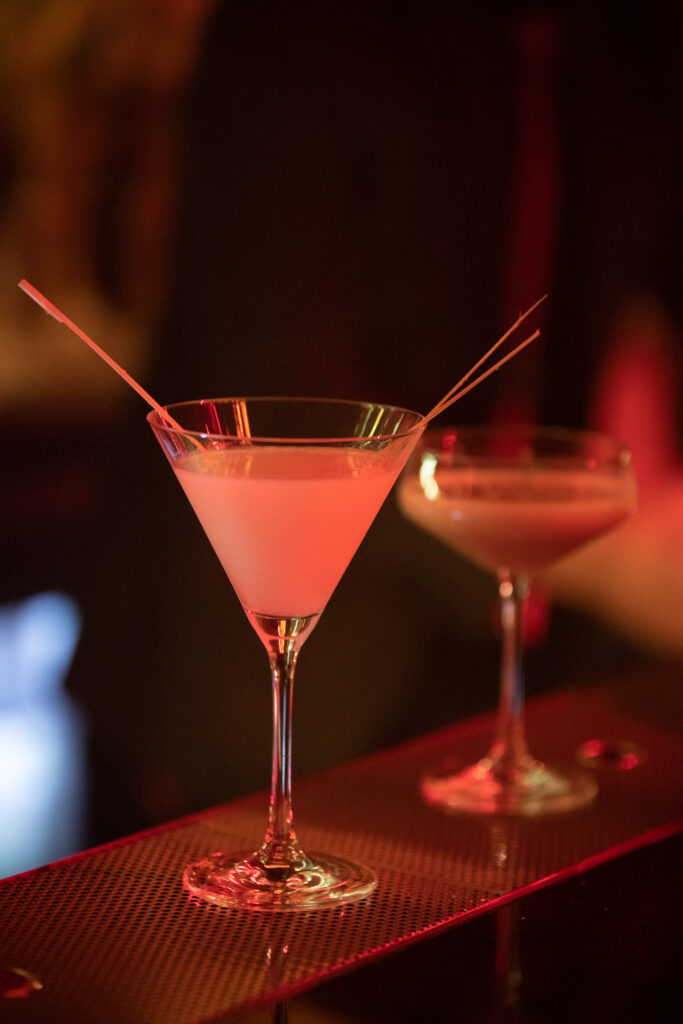
Even the triangular shape of the venue is meaningful, as it is considered fortuitous in Chinese culture. Representing “strength, stability, and balance” along with “the three forces of heaven, earth, and humanity,” Shien emphasized that the Red Pavilion’s journey has felt like it was “shaped by an unseen hand.”
“How do we in this space bring down the divine inspiration, integrate it into our own selves, and then share it with the rest of the world?” they reflected further.
Inspiring a Sense of Wonder
Looking ahead, Shien aims to experiment with new event formats and expand the Red Pavilion’s reach. Most of all, however, she wants to keep what makes the club so special — its diverse portfolio of events and themes.
“I want the Red Pavilion to feel like that portal where you can transcend the ordinary,” she explained. “You are in this space filled with beautiful things to look at and listen to. It’s a bonding experience, the shared sense of awe.”
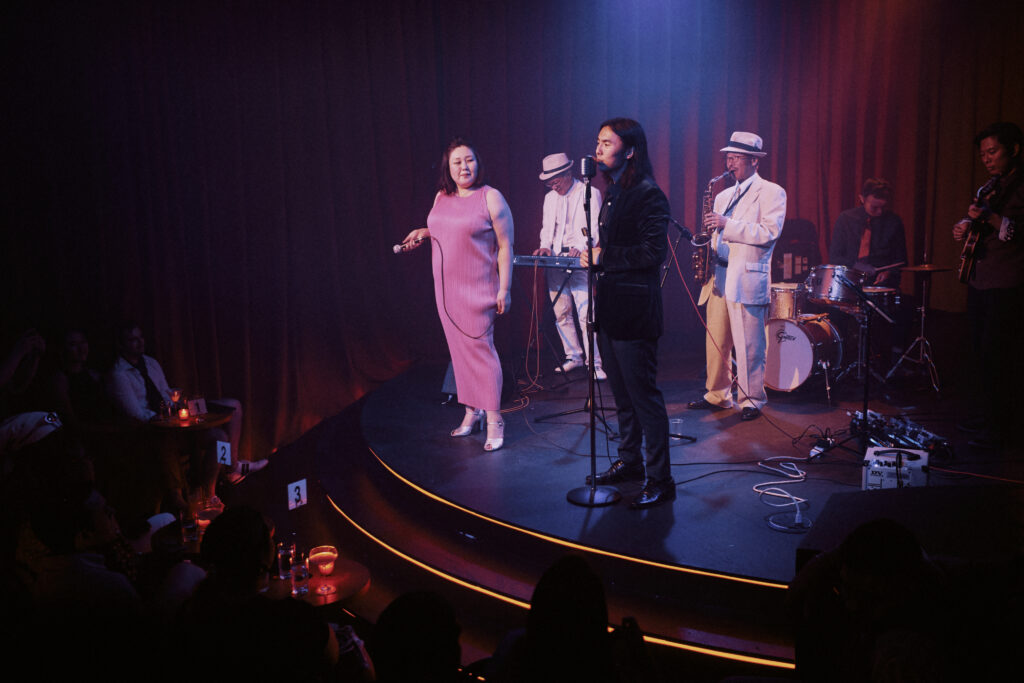
Shien also hopes for guests to feel both creative and restless at the end of each night. The experience is not only meant to deliver enjoyment, but also “break down barriers and inspire a sense of wonder.” By opening their eyes to new realms of possibility, they can tap into a deeper perspective of the world at large.
“As artists, we don’t accept the world as it is. There is a rejection. More than that, it’s a sign of the change we want to see in the world — it could be somewhere we celebrate beauty and feel safe,” Shien shared as her interview with EnVi came to a close.
Every week, the Red Pavilion hosts one-of-a-kind performances ranging from anime jazz to Mandopop. To learn about upcoming events and experience the magic for yourself, be sure to visit their website and Instagram!
Interested in reading about more culture and entertainment? Check out EnVi’s piece on Ricky Sim’s stand-up comedy show Coming Out to Dead People here!
